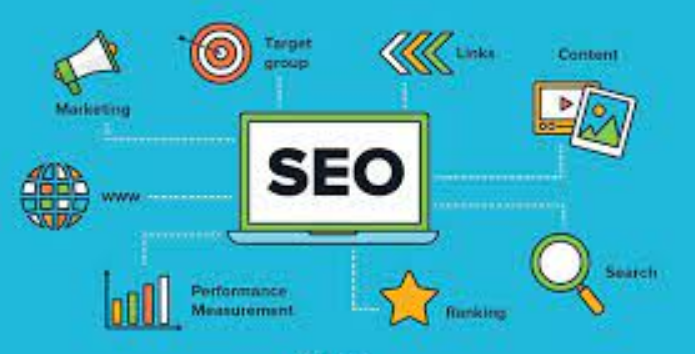Digital marketing can be divided into 8 main categories, including: search engine optimization, pay per click, social media marketing, content marketing, email marketing, mobile marketing, marketing analytics and affiliate marketing.

Digital marketing includes various marketing strategies and techniques used to reach consumers online. As a form of online marketing, it has enabled organisations to create a brand identity and has revolutionised the marketing industry.
Pay-Per-Click (PPC)

Pay-per-click refers to paid advertising and promoted search engine results. It is a short-term form of digital marketing, meaning that once you stop paying, there are no more ads. Like SEO, PPC is a method of increasing search traffic for your online business.
Pay per click can refer to the ads you see at the top and sides of search results pages, ads you see while browsing the web, ads in front of YouTube videos and ads in mobile apps.
Another thing that differentiates pay per click from SEO is that you only pay for results. In a typical PPC model, such as a Google AdWords campaign, you only pay when someone clicks on your ad and gets to your website. You can spend almost any amount on pay-per-click advertising. Some companies can get results by investing only a few hundred dollars, but many large companies spend tens of thousands of dollars per click per month.
The cost of placing an ad or promoting search results is largely determined by how competitive your keyword is. Highly competitive keywords (i.e. keywords that many people search for and many websites try to find) will cost more, while those with low competition are likely to cost less.
When you set up a pay-per-click campaign, you also choose whether to show your ad or promotion to users worldwide or only to users in a specific geographic area. According to Google, if you’re promoting a physical business, this location-based adaptation option can help you avoid wasting ad dollars on showing ads to people who don’t live near your business.
Social Media Marketing

This includes everything a business does through social media channels. Almost everyone is familiar with social media, but marketers need to take a comprehensive, strategic approach to social media. Social media marketing is much more than creating posts and responding to comments on social media.
To be effective, it needs to be a concerted effort, not a belated reflection. To keep posts consistent, there are many online tools for automating and scheduling social media posts, but marketers should only use automation as a tool, not a ‘set it and forget it’ solution. Users will quickly figure it out if there is no real person behind the publication.
Social media marketers should not be independent of other marketing functions. Social marketers should work with a company’s wider marketing team to coordinate their messages across all platforms, both online and offline, so that every part of the brand tells the same story.
An important part of social media marketing is analytics. Social media marketers must also be able to analyse the effectiveness of posts and develop strategies based on this data. Before moving on to a new strategy, it is important to measure the effectiveness of your current social media posts.
Salary.com’s text infographic reports that a social media analyst with a bachelor’s degree can earn around $69,834. Statista reports that 88% of industry professionals say increasing their company’s visibility will be a major benefit of social media marketing in 2021. 79% of companies say increasing website traffic is the biggest benefit.
Beyond Instagram and Twitter, there are several free ways to spread your message. Some other options include Google My Business, eBay, Facebook Messenger and Marketplace.
In other words, social media marketing is much more complex than managing your personal Facebook or Twitter profile. It requires a combination of creative thinking and objective, data-driven strategies, and can be a good fit for professionals who like to combine the two disciplines. According to Salary.com, a social media analyst with a bachelor’s degree earns around $69,834.
Content Marketing

Content marketing uses storytelling and information sharing to increase brand awareness. Ultimately, the goal is to induce readers to take action to become customers, such as requesting more information, subscribing to a mailing list or making a purchase. “Content” can refer to blog posts, resources such as white papers and e-books, digital videos, podcasts, etc. As a general rule, it should primarily provide value to the consumer and not just promote a brand or attempt to make a sale. Content marketing is about building a sustainable, trusting relationship with your customers, which over time can lead to multiple sales, not just one transaction.
Content marketing lives in symbiosis with other types of digital marketing: it’s a method of incorporating SEO search terms into new website content, creating content that can be shared in the form of social media posts and email marketing publications. Looking at content marketing analytics can tell you a lot about your customers: what are they looking for when they visit your website? What type of content will keep them on the site longer and keep them searching? What type will make them lose interest and leave?
Unlike methods such as contextual advertising, content marketing is a long-term strategy. According to marketing automation company Marketo, over time, marketers build a library of content (text, videos, podcasts, etc.) that will continue to drive users to the site through search engines. This content library also helps to promote knowledge about your brand and improve your image as an information resource. And, if users visit your site for information, ideally they will remember you as an authority when making a purchase.
Content marketing is great for anyone who enjoys writing and/or creating videos and audio. But, like digital marketing in general, it requires strong strategic and analytical skills.
Email Marketing

Even with the advent of social media, mobile apps and other channels, email remains one of the most effective marketing methods, Rogers says. It can be part of a content marketing strategy that delivers value to consumers and converts audiences into customers over time. According to the American Marketing Association, email marketers not only know how to create compelling campaigns, they also understand optimal audience reach and know how to analyze customer interactions and data and make strategic decisions based on that data.
Email marketing software can provide many different analytics metrics, but two metrics that marketers have worked hard to improve are click-through rates (the percentage of recipients who open an email) and click-through rates (the number of people who open an email). According to Constant Contact, a leading email marketing software company, there are many things marketers can do to make their emails more appealing to users and more likely to be opened. These include:
Create a sense of urgency. Writing an email to let your recipients know that time is running out for a special product or that only a limited number of offers are available can increase the number of people who click through to your website.
Personalise your emails. Customising your emails and subject lines with recipients’ names is a proven way to increase opens and clicks. (Example subject line: “Special offer just for you, Katie.”)
Allow recipients to set their preferences. Allowing users to specify how often they want to hear from you can help some of your email subscribers subscribe to your list and click through to your emails.
Search Engine Optimization (SEO)

The goal of SEO is to increase a company’s ranking in Google search results, which ultimately increases search engine traffic to a business website. To do this, SEO marketers study the words and phrases consumers use to search for information online and use these terms in their own content. According to “The Beginner’s Guide to SEO,” by leading SEO software company Moz, SEO consists of many elements, from the words on your web pages to how other sites link to you online to the structure of your site. According to Salary.com, SEO specialists earn around $70,999.
So what can improve the SEO of your website? It’s important to realise that one of the problems with SEO is that the answer always depends on search engines and their latest algorithms. With that in mind, here are some of the most important things for SEO strategists and marketers in general to understand about how SEO works today, from Moz’s SEO Beginner’s Guide:
Content Indexing. It’s important for search engines to clearly ‘read’ your website content by adding surrogate text for images and text transcripts for video and audio content.
Good link structure. It’s important that search engines can ‘scan’ the structure of your website to easily find everything on your site. SEO experts can do a lot to properly format links, URLs and sitemaps to make them most accessible to search engine robots.
Keywords and keyword targeting. Proper use of keywords – the search terms you want to find on your website – in your content and headlines is one of the main building blocks of SEO. It is no longer advisable to ‘stuff’ your content with as many keywords and keyword variants as possible. Writing high-quality content that uses a keyword in the headline and multiple times in the content of the page being scanned is now considered best practice and will allow the page to rank better in search results.
Mobile Marketing

This type of digital marketing focuses on reaching your target audience through a smartphone or tablet. Mobile marketing reaches people through text messages, social media, websites, emails and mobile apps. Marketers can tailor offers or special content based on geography or time of day, such as when a customer enters a store or attends an event.
ContentMarketingBody In February 2022, Statista conducted a survey in which 46% of respondents said they spend five to six hours a day with their phones for personal use. In addition, 22% said they spend more than three hours a day on their phones. Between late 2020 and early 2021, mobile users in the U.S. will spend approximately 40 minutes a day on social media apps, with Facebook and Instagram having the largest audiences.
E-commerce has grown significantly over the past few years and has become an important part of global retailing. In 2021, 70% of retail visits to websites will be made by smartphone users, and online retail sales will grow by more than $4.2 trillion by 2020, according to Statista.
Marketers know you need to get your message to where your customers are, and it’s clear: Your potential customers are talking on their phones.
Marketing Analytics

One of the key benefits of digital marketing is that it’s easy to track and measure. Once upon a time, the only trackable marketing materials were coupons and similar direct mail offers. If a customer uses a coupon, you know the message has resonated. Today, analytics allow marketers to track user behavior at a very detailed level: how many links they click, how much time they spend on Web pages, how often they open emails, and more. But with the abundance of available information on digital marketing effectiveness akin to drinking from a fire hose, marketers need to be able to truly understand what the data means and how it should inform strategy.
Not only does this allow marketers to understand what consumers are succeeding at and tailor their marketing messages, but it also means they can demonstrate their value to companies. Understanding all of this data and using it to make strategic decisions is an important part of a digital marketer’s job and what sets them apart from their traditional counterparts.
There are many tools to measure the success of a digital marketing campaign, and many marketers use a combination of these tools depending on their needs and audience. One of the most commonly used marketing analytics tools is Google Analytics, which can be customized in an almost infinite number of ways to measure the effectiveness of your website, what keywords bring users to your site, how users navigate your site and more.
Having good, accurate analytics and experience interpreting it can help marketers “fail fast,” quickly reduce ineffective campaigns and build more effective campaigns based on concepts with a successful track record. You won’t just use analytics to measure your campaign over time – analytics will inform and improve your campaign.
Affiliate Marketing

With the growing popularity of online marketing, affiliate marketing (also known as influencer marketing) has become popular with many organizations in bridging the gap between consumers and organizations. But what is affiliate marketing?
Affiliate marketing capitalizes on the growing popularity of industry experts and social media influencers. When working with these third-party influencers, your organization will collaborate to promote your product or service in exchange for compensation. In partnership, influencers will engage their audience through publications, blogs or videos, expanding business for your organization and attracting new potential customers. The BLS text infographic predicts that the number of advertising, promotion and marketing managers will increase by 10% by 2030.
Affiliate marketing, or influencer marketing, has grown significantly over the past few years as new media such as TikTok, Instagram, Youtube and blogs have become mainstream forms of entertainment, news and delivery. Affiliate marketing has become one of the most popular forms of digital marketing. According to Influencermarketinghub.com, the affiliate marketing industry is expected to reach $12 billion by 2022.
The job market for marketers is growing. United States. The Bureau of Labor Statistics (BLS) predicts a 10 percent increase in the number of advertising, promotion and marketing managers. According to the U.S. Bureau of Labor Statistics, the average salary for these positions in 2021 is $133,380.
Digital marketing is a rapidly changing field, Hobson said, and it’s critical that companies keep up with new strategies. Companies can do this in a variety of ways, with digital marketing specialists responsible for some and other departments responsible for others.
“Staying ahead of the competition has never been more important,” Rogers said. “The business landscape is changing so rapidly that it’s become a key strategy, including striving to compete to help develop your own digital strategy.”





